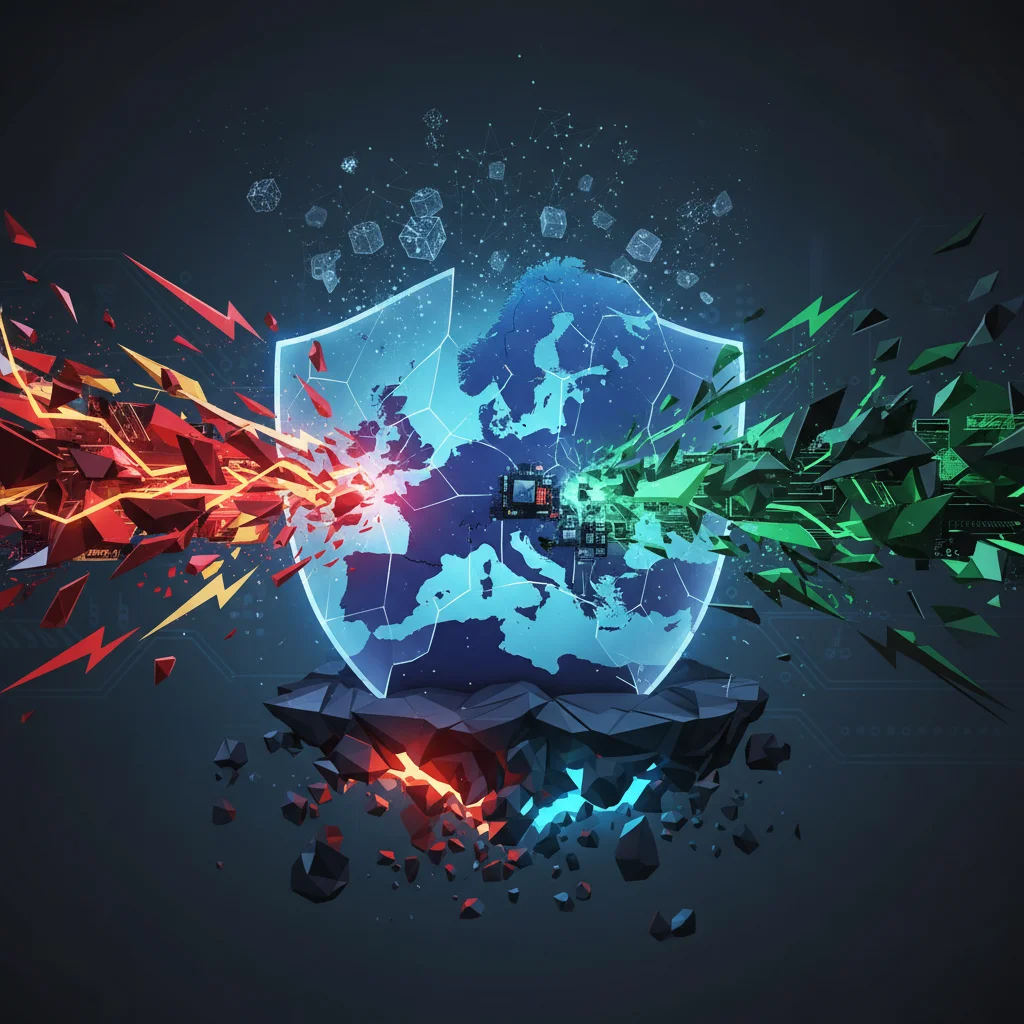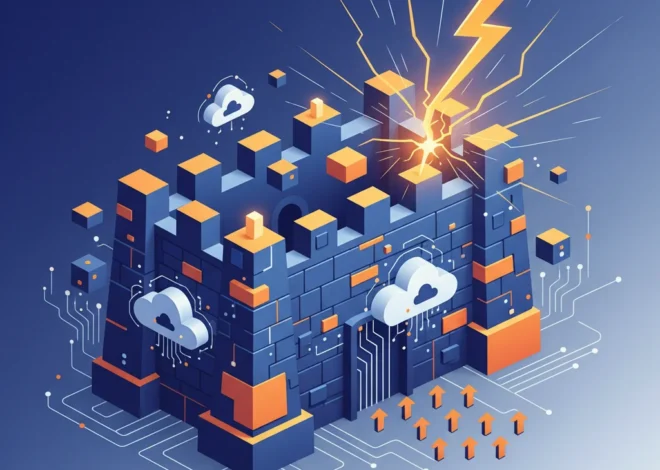
Caught in the Crossfire: Why Europe’s Tech Future is Hostage to the US-China Mineral War
The Invisible Foundation of Your Digital World is Cracking
You’re building the next great SaaS platform. Your team is pushing the boundaries of artificial intelligence with complex machine learning models. You live and breathe code, deploying seamlessly to the cloud and iterating on your product. But have you ever stopped to think about what physically underpins this digital reality? It’s not just elegant software and clever programming; it’s a mountain of high-performance hardware—servers, GPUs, and semiconductors—all powered by a handful of obscure metals pulled from the earth.
Now, imagine the supply chain for those metals is the rope in a geopolitical tug-of-war between the world’s two biggest superpowers. That’s the precarious situation Europe finds itself in today. It’s a digital giant standing on feet of clay, caught in a dangerous dependency trap. On one side, it relies heavily on America’s digital ecosystems—the cloud infrastructure from Amazon, Google, and Microsoft that powers countless European startups. On the other, it’s critically dependent on China, which dominates the processing of the rare earth elements and critical minerals essential for building the very hardware that runs on that cloud.
This isn’t just a problem for miners and manufacturers. It’s a direct threat to Europe’s entire tech ecosystem, its drive for innovation, and its ambition to be a sovereign player in the digital age. The US-China rare earth war is raging, and as a recent Financial Times analysis points out, Europe is positioned to be the biggest loser.
The Digital-Physical Paradox: Europe’s Double Bind
Europe’s predicament is a classic case of being stuck between a rock and a hard place. The continent excels at high-value applications—building sophisticated software, leading in specific areas of industrial automation, and fostering a vibrant startup culture. However, it has outsourced the two foundational layers of the modern tech stack:
- The Digital Layer: The vast majority of European cloud computing, a market essential for scaling any modern tech business, runs on US-owned infrastructure. This creates a dependency on American technology, policy, and pricing.
- The Physical Layer: The hardware that forms the bedrock of data centers, AI clusters, and personal devices is built with components that rely on a supply chain overwhelmingly controlled by China.
Think of it like this: Europe is a brilliant architect designing a revolutionary skyscraper. But it’s renting the land from the United States and buying nearly all of its specialized steel from China. If the landlord and the steel supplier get into a bitter dispute, construction on that skyscraper grinds to a halt. This is the reality facing European tech leaders, entrepreneurs, and developers today.
What Are “Critical Minerals” and Why Do They Matter to Your Code?
The term “rare earth elements” is a bit of a misnomer. These 17 metallic elements aren’t necessarily rare in the ground, but the complex, polluting, and capital-intensive process of extracting and refining them is concentrated in very few places. And right now, China dominates this space. According to some estimates, China is responsible for around 90% of the global processing of rare earths.
For tech professionals, this isn’t an abstract geological issue. These materials are the secret ingredients in the technology you use every single day. Without them, the engine of digital progress seizes up. Let’s break down the direct link between these minerals and your tech stack.
| Critical Mineral | Its Role in Your Tech World |
|---|---|
| Neodymium & Praseodymium | Used to create powerful, lightweight magnets essential for data center hard drives (HDDs), electric vehicle motors, and wind turbines. |
| Gallium & Germanium | Critical for high-performance semiconductors, 5G base stations, and fiber-optic cables. China recently placed export controls on these (source), firing a direct warning shot. |
| Lithium & Cobalt | The heart of modern batteries, powering everything from your laptop to the uninterruptible power supplies (UPS) that keep data centers online. |
| Tantalum | Used in capacitors for smartphones, laptops, and automotive electronics to store energy. |
When a developer spins up a new virtual machine in the cloud or trains a complex AI model on a cluster of GPUs, they are implicitly relying on a stable supply of these materials. A disruption doesn’t just mean a price hike for a gadget; it means the cost of computing itself could skyrocket, and the availability of next-generation hardware could plummet.
The AI Revolution Is Coming for Your Lawyer: Meet the 6 Companies Leading the Charge
Europe as the Battlefield in a Global Tech War
The escalating conflict between Washington and Beijing is forcing every nation to pick a side, but Europe is uniquely squeezed. The US, through initiatives like the CHIPS Act and stringent export controls, is trying to kneecap China’s technological advancement, particularly in high-end semiconductors and artificial intelligence.
China’s most potent response isn’t military; it’s economic. By leveraging its dominance in mineral processing, Beijing can disrupt the entire global hardware supply chain at will. Its recent export restrictions on gallium and germanium were a clear signal: if you cut us off from high-end chips, we can cut you off from the materials needed to make them.
European tech companies are caught in the ricochet. To stay competitive, they must use the best US-designed chips and SaaS platforms. But to build their products, they need access to the hardware components that are inextricably linked to China’s industrial base. This creates a nightmare scenario:
- Supply Shocks: Sudden export bans or tariffs from China could halt production lines for European hardware manufacturers.
- Price Volatility: Even the threat of restrictions can cause mineral prices to soar, increasing the cost of servers, networking gear, and corporate laptops.
- Compliance Chaos: Navigating conflicting US and Chinese regulations becomes a legal and operational minefield, especially for companies with global operations.
- Cybersecurity Risks: A dependency on a single, state-controlled supply chain for fundamental hardware components introduces a massive attack surface for state-sponsored espionage or sabotage. This is a cybersecurity vulnerability at the most basic level.
Verisure's IPO Boom: Why a Security Company's Success is a Game-Changer for AI and Cybersecurity
The Ripple Effect: From Your IDE to the Boardroom
This high-level geopolitical chess match has very real, ground-level consequences for everyone in the European tech ecosystem.
- For Developers and AI Engineers: The cost and availability of high-performance computing are paramount. If the supply of next-gen GPUs is constrained because of a mineral shortage, it directly impacts your ability to train larger machine learning models, run complex simulations, and innovate. The price of your favorite cloud compute instances could rise, affecting project budgets and timelines.
- For Startups and Entrepreneurs: Uncertainty is the enemy of growth. For hardware startups, securing a reliable component supply becomes a major challenge. For SaaS startups, the rising cost of the underlying cloud infrastructure could squeeze already-thin margins, making it harder to compete with deep-pocketed US rivals.
- For CTOs and CIOs: Strategic planning becomes incredibly difficult. How do you build a five-year technology roadmap when the availability of core infrastructure is subject to the whims of geopolitical tensions? It forces a radical rethinking of supply chain resilience, vendor diversification, and the true cost of ownership for technology platforms.
The Road to “Strategic Autonomy”: Is There a Way Out?
Faced with this existential threat, Europe is slowly waking up. The goal is “strategic autonomy”—the ability to act independently on the world stage. But achieving this in the tech sphere is a monumental task. There are no easy fixes, only a series of difficult, long-term trade-offs.
Here are some of the paths being considered, along with their challenges:
| Proposed Solution | Potential & Benefits | Challenges & Drawbacks |
|---|---|---|
| Onshoring & Reshoring | Develop domestic mining and processing capabilities (e.g., new mineral discoveries in Sweden). This offers maximum control and supply security. | Extremely slow, expensive, and faces significant environmental opposition and regulatory hurdles. It could take over a decade to bring a new mine online. |
| “Friend-Shoring” & Diversification | Build resilient supply chains with allied nations like Canada, Australia, and others in Southeast Asia. Spreads risk. | No other single country can currently match China’s scale, speed, or low cost in mineral processing. It fragments the supply chain, potentially increasing complexity and cost. |
| Innovation in Recycling & Material Science | Invest in a “circular economy” to reclaim critical minerals from electronic waste. Develop new materials that reduce or eliminate the need for rare earths. | Technology is still nascent and not yet at a scale to replace primary extraction. A long-term R&D play, not a short-term solution. |
| Automation & AI in Processing | Use advanced automation and AI to make European processing plants more efficient and cost-competitive, offsetting higher labor and environmental costs. | Requires massive upfront investment in new technologies and infrastructure. Still doesn’t solve the core issue of access to the raw ore. |
Geopolitics in Your GPU: Why China's New Rules on Rare Earths Could Upend the Tech World
The Choice Ahead: A Spectator or a Player?
The conflict over the physical building blocks of our digital world is defining the 21st century. For Europe, the comfortable era of simply consuming the best technology from both the US and China is over. Its dual dependence has turned from a convenience into a critical vulnerability.
The path forward requires a unified and urgent strategy. It demands massive investment, a tolerance for the high costs of building secure supply chains, and a political will to make difficult decisions. For everyone working in European tech—from the solo developer to the enterprise CEO—this is no longer someone else’s problem. The stability of your career, the success of your company, and the innovative potential of your continent now depend on solving a problem that starts deep in the earth.


